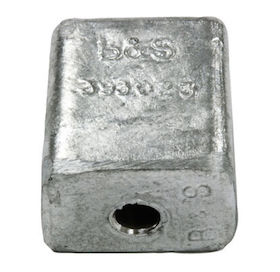
Curated with aloha by
Ted Mooney, P.E. RET

The authoritative public forum
for Metal Finishing 1989-2025

-----
Plating motorcycle parts at home
1998
Q. Dear Sir,
Having read an article in Classic & Motorcycle Mechanics, I have taken a great deal of interest in the prospect of plating motorcycle parts at home (to aid my restorations, not commercially).
Although the article is about zinc plating (which I will try first), I also believe (mainly from the vast amount of kits around) that nickel, copper, and even chrome may be safely plated at home, with a little equipment.
Firstly let me tell you a little about myself...
I am an electronics engineer working in the computer industry in the United Kingdom. My hobby is restoring old motorcycles and I am a member of the Honda Single Overhead Cam Four Club, which is an international internet based club with over 1000 members world wide. The parts I wish to plate are mainly fasteners and brackets, which although I can get plated fairly cheaply commercially, I would still like to do it myself, ( stubborn I guess ).
Now additional information to the enclosed article that I (Think I) know so far...
- 1/. This zinc formula ( and nickel for that matter ) would be improved by maintaining a heat of around 100(F).
- 2/. This Zinc process would be improved by agitating the electrolyte with an air pump.
- 3/. I have been told the finish will not be good without brighteners:
- a) can I not just polish to a bright finish.
- b) can I not 'make' a brightener.... can you suggest a recipe?
- 4/. Can You suggest a formula for nickel inc current rates, etc., approx. 2 gallons of electrolyte.
- 5/. Can you suggest a formula for copper........
- 6/. Chrome---I've been told I can also do this at home, if I cover the surface area of the electrolyte with small plastic balls (table tennis style) and use a household cooker hood with carbon \ charcoal filters over the top of the plating vessel.
- a) what do you think?
- b) Can you suggest a formula for this process.
I will not run before I can walk, and will perfect the zinc process first, although I feel nickel will be hot on the heels.
I find this subject fascinating although do not have the money available to go and buy all the pre-made crystal type kits, especially when I know that the chemicals involved will cost me less than tenth of the price of the kit, and I already own fairly substantial variable power supplies, can get quantities of pure zinc or nickel for next to nothing and still have the itch to do as much to my bikes as possible myself.
Please don't write me off as a crack pot, I have already downloaded as much as possible from your library, and a lot of information from other plating related web sites.
Yours Sincerely
Chris [last name deleted for privacy by Editor]U.K.
A. Hello, Chris. I agree that you should start with zinc plating.
For nickel plating, though, you will find great info on older nickel addition agents like formaldehyde, coumarin and saccharin in the ASM Metals Handbook Volume 5 if your library can locate it for you. The reason that commercial brighteners and other proprietary ingredients are expensive is that years of work went into developing them. While the guidebooks give general pointers, manufacturers who have paid for a lifetime of researchers' time won't give away for free the results of that investment. You won't find the formula for Coke on the internet either. But many of these brighteners aren't simply "mixed" anyway, they are "synthesized from precursors" -- more like cracking and distilling gasoline from crude oil than like baking a cake.
It's not a question of writing you off as a crackpot, but as someone who may not yet fully appreciate the situation. It's both a question of a hobbyist generating acceptable quality plating, and of safety and proper waste disposal. In addition to visiting websites, you might also see some plating books and journals, join a plating organization, and consider a training course.
Chrome plating solution is a known carcinogen and causes chrome ulcers and nasal perforations. A garage in a (presumably) residential area is no place for it. What if you knock over a bucket and the chrome leaches into the water supply? One reason that governments want shops to have licenses and permits is so you must report such accidents so they can fine you the cost of the cleanup and supervise it. The kind of copper plating you are contemplating is done out of a cyanide solution; cyanide should only be used under careful control in an industrial setting. Nickel is prohibited from jewelry in your country because many people are allergic to it. Plating certainly is not impossible, but it is difficult, and you should consider making a real business out of it in a proper industrial setting.
I am sure that you will try your best to be smart and careful, and to progress gradually, but people plating at home are loose cannons that neither governments nor neighbors are very happy with, and not without reason -- so you really must expect resistance if you don't set it up as a business with proper permits.
I knew a good man who was knowledgable enough to co-author a book about plating; all the professionals in my area knew him. He tinkered in his garage, and over the years talked himself into helping a few small businesses with their plating needs, and eventually found himself some years later with a garage full of chemicals he could not get rid of. When he realized that his choice was to lose the family home to pay the disposal cost or illegally dispose of the chemicals, he ended up in the penitentiary -- government can be serious about this. Good luck.

Ted Mooney, P.E.
Striving to live Aloha
finishing.com - Pine Beach, New Jersey
1998
A. I agree with ted extremely, I have bought a portable gold plating kit, including that delicious 17 ounces of cyanide gold, well I used to have asthma, and the cyanide bothered my lungs enough to bring it back, even tho' there was no real harm done, I still love plating, its is a great feeling yet, I suggest to get a supplied air system, which I never hear any plater talk about, but I would rather be 99% safe, even if by accident (they can happen) a large amount of poisonous gas is released, I will still be feeling fine in my chemical suit and respirator equip. Long story short you remind me a lot of myself, even tho' I am only 15, I love to plate once I started, so if you continue, I suggest getting good ventilation with filters for paint spray attached (keep the air clean!)and quality equip, homemade or not.
P.S. Don't start plating as a little experiment, get involved, and if you can't afford some of the equip wait till you can, take it from someone who should have.
yours truly
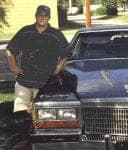
Barrett Russell
Saskatoon, Saskatchewan, Canada
1999
Home zinc plating
Q. I am restoring a Mustang and am constantly coming across small parts that need replating. (I presume it is zinc) I believe that you can get small kits to do this but they are not available in Australia. Can someone tell me the chemicals needed (proprietary names may be different here) anodes and the battery setup required. A description of the process would be welcome.
Thanks.
Simon Bowden- Australia
1999
1999
A. Hi, Simon. In principal, plating is easy. Our FAQ teaches school kids how to do zinc plating in minutes. But when you need the plating to actually be good enough to be functional, it's probably just not that easy that the process could be described in a few paragraphs. Please see our "must have" booklist and try to find one of the recommended books in your library. There are hobby plating kits, including Eastwood's tin-zinc plating system; but as you say it may not be available in Australia.
Regards,

Ted Mooney, P.E.
Striving to live Aloha
finishing.com - Pine Beach, New Jersey
Bright zinc plating at home
Q. I would like to re-visit home plating once again. I am a hobbyist car restorer that is constantly having to get small screws and bolts replated. I have tried to batch them to save money, but I can't seem to get them all back safe and sound.
From there I went to getting them done as I need them so they don't get lost. The minimum charges are killing me to get six or seven bolts done at once. There has to be a better way.
I don't even want to consider anything dangerous like chrome plating at home, but I understand that clear zinc is not too dangerous. I tried one kit, and it looks fine, but has to be painted with clear to protect it from rust. Well, that's not much of a plating job! I tried another kit, and cannot seem to get the screws to come out right.
How can I do the parts that I need done to restore my cars at home. What I would like is clear (bright) zinc and a yellow zinc or cadmium if those can be done easily and safely. I can't afford to keep losing parts or keep holding my work up for 2 weeks at a time for a few screws to get done. Can anyone help?
Vito Pacione- Houston, Texas
2001
Multiple threads merged: please forgive chronology errors and repetition 🙂
Q. I am restoring an old car. I am on a limited budget so I'm going to replate small parts, that were originally cadmium plated, with zinc (The Cad has been removed). The "kits" for non-cyanide zinc plating seem expensive compared to gathering up the necessary components. I understand the current requirements and the zinc anode but am stumped by the solution. It appears that the kits use zinc oxide, sodium hydroxide and possibly a wetting solution dissolved in distilled water.
Could you help me out with the proper ingredients and mix of same?
Thanks in advance,
Tom Wander- Austin, Texas
2001
A. There is more to it than that, Tom; the suppliers have paid for man-years of research to optimize the surfactants, complexers, brightening agents, etc. If you do a lit search through the trade journals you will see the early work on such subjects, and probably achieve passable results, but you won't see the later research work or the fruits of their efforts. Please consider just buying the stuff -- that's what even the most sophisticated zinc plating shops do. Good luck.

Ted Mooney, P.E.
Striving to live Aloha
finishing.com - Pine Beach, New Jersey
2001
Q. I'm not asking for anyone's trade secrets, I don't want to know about surfactants or complexors. I just want to know how much zinc oxide and sodium hydroxide and wetting agent, if any, to add to a gal. of distilled water for a basic solution. A passable job to you may be a superior job to me.
Tom Wander [returning]- Austin, Texas
2001
A. Per the Metal Finishing Guidebook then:
- 0.8-1.2 oz/gal Zn and 10.0-14.0 oz/gal NaOH for "low chemistry"
- 1.8-3.0 oz/gal Zn and 16.0-20.0 oz/gal NaOH for "high chemistry"
Good luck with it!

Ted Mooney, P.E.
Striving to live Aloha
finishing.com - Pine Beach, New Jersey
2001
Multiple threads merged: please forgive chronology errors and repetition 🙂
Q. I'm trying to do some bright zinc plating for an auto restoration project I'm doing and follow these instructions from in a previous post for the electrolyte. The plating didn't come out very good. Can you provide more info on how much of each item in the electrolyte.
"But essentially, we suggest that you either copper plate or zinc plate your item, using copper wire as the source of copper or sanded down pennies as the source of zinc, vinegar ⇦in bulk on eBay or Amazon [affil links] as the electrolyte, with the following additives: some epsom salts to aid conductivity a little sugar as a brightening agent a drop of dishwashing liquid as a wetting agent A 1-1/2 volt D-cell flashlight battery will supply enough current"
Chuck Kahlerhobbyist - Camano Island, Washington, USA
2004
2004
A. No surprise it didn't come out very good Chuck :-)
That letter was directed to a child plating a penny for a grammar school science fair, where we restricted our 'plating solution' to something safe for the smallest child to play with. Unfortunately that approach offers little chance of producing what you would consider practical zinc plating for automobile restoration. Your better bet might be to take your parts to a plating shop. Sorry.

Ted Mooney, P.E.
Striving to live Aloha
finishing.com - Pine Beach, New Jersey
Zinc plating at home for newbies
Q. Hello, I am trying to find a zinc plating guide for the hobbyist.
There must be some free guides on the internet, but I cannot find any. Can you help me?
Thanks!
hobbyist - Asker, Norway
2006
2006
A. There is an FAQ on this site, "How Electroplating Works" that presents a simple zinc plating experiment for school children, Thomas. Additionally, there are hundreds of answered questions about zinc plating on this site alone, so the info is out there.
However, to present a subject in cogent tutorial form takes many man-weeks of effort preparing the materials, so I don't think you'll find what you're looking for as a free webpage. Used copies of the Metal Finishing Guidebook are available in the $10 range if you can't find a copy at the library. Good luck.

Ted Mooney, P.E.
Striving to live Aloha
finishing.com - Pine Beach, New Jersey
2006
A. Simple zinc plating solution:
100 gm zinc sulphate
⇦ this on
eBay
or
Amazon [affil links]
25 gm magnesium sulphate
10 gm potassium aluminium sulphate
3 gm boric acid
1 lit water
2 V, 1,4 A/dm2,zinc anode
Good luck!
- Cerovski vrh Croatia
Re-plating Bolts: Tin-Zinc vs. Zinc-Nickel or other
August 6, 2012Q. I am rebuilding a 92 Mitsubishi 3000gt vr-4. I am wanting to re-plate the bolts, nuts, washers, and all the other little metal pieces that need refinishing. It appears that most of the smaller engine bay bolts, and all interior bolts have a yellow zinc finish, however all the larger, more structural bolts have a black/rust finish.
I do not care about restoring it to factory appearance, I would prefer a nice shiny silver for all the bolts if its possible, but my biggest concern is the longevity of the coating to prevent rust. I want them to look good for as long as possible. I live in Central Florida, car might or might not be garaged. I want the bolts to be able to thread into the factory holes without tapping them larger so no thick coatings.
I considered replacing them with stainless steel bolts but apparently they are weaker, and gall easily so I no longer want to go that route.
The stock bolts I have now are in pretty good condition, just slight rust wherever the zinc has failed.
I want to re-plate these stock bolts so I am trying to figure out with what. If I go with zinc, I would use the clear/blue chromate, but I have read that tin-zinc and zinc-nickel offer longer protection yet I cannot find any information on tin-zinc vs zinc-nickel, they seem to advertise the same properties. Which one, if either, would be superior for an automotive engine bay and under the car environment. About half of these bolts thread into aluminum so there is also the worry of dissimilar metals, but obviously the stock bolts were zinc plated and they all thread in and out without too much issue.
Also for the parts that are black from the factory, I assume this is a black oxide coating which I read does not cause hydrogen embrittlement, these bolts are pretty substantial so a failure here due to hydrogen embrittlement could be dangerous so I do not want to just throw them in with the rest of the bolts being zinc-_____ plated and have them all snap down the road. Does baking the bolts really cure the H-E problem or is it a "maybe it will, maybe it wont" case.
To sum it up, what would the best bolt coating for an engine bay and under the car be?
Also I was considering having the bolts of the fasteners plated by a professional but I was also wanting to order a D-I-Y kit, but they do not offer either of the zinc alloy coatings mentioned above; is the only difference between coating with zinc and zinc-nickel or tin-zinc the type of anode used? The main reason for wanting a diy kit is that I would like to plate each and every little piece in all the individual assemblies, such as gear shifter, alternator, etc and I do not want to have all of these apart at the same time to take all the fasteners to a plating shop in one bulk trip.
Car Restorer - Haines City, Florida
A. I'd use electroless nickel, done by a reputable plating shop. EN will look good and last a long time.
The plating shop should be able to plate all your fasteners in bulk, in a basket or barrel, and it will likely cost less than trying to plate them DIY.
Any bolts which are known or believed to be high strength should be baked after plating to avoid catastrophic failure from hydrogen embrittlement. If in doubt, have the shop bake all of them.

Jeffrey Holmes, CEF
Spartanburg, South Carolina
August 8, 2012
Q. Thank you for the response Jeff, I did contact an electroless nickel plating shop in North Carolina and the owner of the shop actually recommended that I did not use EN as it would add too much thickness to the bolts making them too fat to thread into their holes. He said I should stick with zinc because of that issue. Is this not an issue as he stated it is?
Sean CastleCar restorer - Haines City, Florida
August 12, 2012
A. Fasteners originally zinc plated probably had not less than .00015" plating thickness minimum, and because they were electroplated, the thickness was greater near the end, perhaps .0005", maybe more than that. This thickness was allowed for when they were manufactured.
Electroless plating is uniform in thickness all over, so I'll bet that .0003" of electroless nickel will provide acceptable corrosion resistance and they will be okay dimensionally.
If a few end up tight, a hand tap or die will easily solve the problem.

Jeffrey Holmes, CEF
Spartanburg, South Carolina
August 14, 2012
![]() Electroless nickel platers are like the rest of mankind, Sean. They may have a bad day when they don't really want your business, or they just want to get off the phone and they take the shortest path to that destination -- by talking you and perhaps themselves into it not being the right finish :-)
Electroless nickel platers are like the rest of mankind, Sean. They may have a bad day when they don't really want your business, or they just want to get off the phone and they take the shortest path to that destination -- by talking you and perhaps themselves into it not being the right finish :-)

Ted Mooney, P.E.
Striving to live Aloha
finishing.com - Pine Beach, New Jersey
August 17, 2012
Q. I am reviving a 1985 Ford Ranger 2.3L gas engine and have just had two EGR (exhaust gas recirculation) fittings duplicated at a machine shop: a threaded exhaust manifold connector and the lower EGR tube fitting that connects to it. I want to have these plated, so they won't corrode and freeze like the old ones did. The question is, should they be electroplated or electroless plated and with what: zinc, zinc-nickel, nickel? Should they be chemically coated?
Joe Marlowe- Leakey, Texas
September 27, 2014
No Amperage is Passing through vinegar, Epsom Salt and Sugar
Q. Hi, I'm wanting to zinc plate some small motorcycle parts (fasteners and other small hardware) and have a solution of vinegar, epsom salt and sugar as suggested here: www.finishing.com/faqs/plating.shtml with 1 D battery powering the process but cannot get it to pump ANY amperage and was wondering if I should just add more salt or what to do?
There is voltage across the solution measured as 1.59V and I placed my ohmmeter leads into the solution which measures approx. 7K ohms but I don't know if that is high, low or just right either and any advice on this would be most appreciated and I thank you in advance.
Hobbyist - Gainesville, Florida, United States
December 1, 2015
A. Hi Stuart. If the wires are connected, and the electrodes are conductive, and the solution is conductive (which vinegar will be, and the more so with salt in it), then current has to flow. Therefore you have a bad connection to the anode or the cathode, or one or both is so dirty and insulated that current won't flow. Can you successfully plate a penny, as the FAQ proposes?
Regards,

Ted Mooney, P.E. RET
Striving to live Aloha
finishing.com - Pine Beach, New Jersey
December 2015
Q. Hi Ted,
The wires are connected and the electrodes are conductive but I've wondered if their "connections" were sufficient.
Basically, I have a clean 1 gallon bucket with 3 Liters of white vinegar, approx. 12 oz of Epsom salt and 11 oz of sugar (all roughly measured with measuring cup; bad, I know but I thought should be close enough for this).
As far as the connections, that's what I've already worried about as everything is spotless clean BUT the anode and cathode(s) are merely hanging in the solution from pieces of solid, uninsulated copper wire with hooks bent into the ends and I do agree this doesn't seem a satisfactory connection but seems to be the standard.
During testing, I've placed my finger on the anode and cathode and pressed down to tighten the connection and still get nothing as far as amperage but I will crimp a ring terminal to the + wire and securely screw it to the anode but I'm not expecting anything better out of that as I've already pressed down on the parts with my finger to tighten them up?
Is it possible the sugar is causing problems as I tried plating in the past with just WATER, vinegar and epsom salt and it produced bubbles and looked like something was happening but after learning a stronger concentration of vinegar would be better (eliminating the water) I mixed up a new solution of vinegar, epsom salt and sugar but now nothing happens with the same setup that was making hydrogen bubbles before. Weird. Is it the sugar?
- Gainesville, Florida, United States
December 2, 2015
by Larry Durney
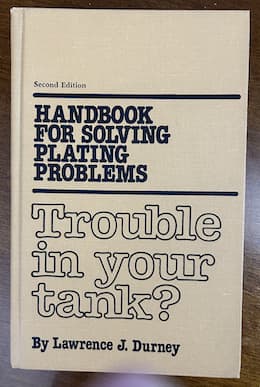
on eBay
(sometimes) or
AbeBooks
(rarely)
or Amazon
(sometimes)
(affil links)
A. Hi again. That is at least 10x, and probably 50x, as much sugar as could be useful (I honestly don't know if the sugar does anything anyway), but I have a hard time conceiving that the sugar could interfere with passage of current. Are you sure neither your cathode nor anode are aluminum? Please try to plate a penny before searching for arcane explanations :-)
One of the best-known figures in the plating industry wrote a book about how even highly experienced platers usually approach trouble-shooting wrong, blaming the solution first :-)
Regards,

Ted Mooney, P.E. RET
Striving to live Aloha
finishing.com - Pine Beach, New Jersey
December 2015
Black burn marks on home zinc plating
February 26, 2017
Q. I am using a home zinc-nickel plating kit. I initially got good results on some test bolts and then I zinc plated a gearbox flange with excellent results. Since then I've plated three more items and all of them have given bad results. This is today's result; after ten minutes the item showed black burn marks as shown in the photo.
I stopped the plating process when these were seen.
The part had been sand blasted, old zinc removed with phosphoric acid until it stopped fizzing, dunked for 5 minutes in caustic soda ⇦liquid caustic soda in bulk on
Amazon [affil link]
solution, rinsed, 1 minute pickle, rinse, then into the zinc plating tank with a current of 0.07A per sq. inch (a little low as I wanted to check it wasn't due to high current). I was using an aquarium air pump for water agitation but I don't think it was on all the time.
Many thanks
Philip
Hobbyist - UK
Q. Hello,
I want to make up a zinc plating bath for a small experiment I am doing. I want to put a protective coating on some 4130 hardware that is used around the lab. I found a recipe (Modern Electroplating by Lowenheim) that calls for 5-15 g/L Zn (as metal) and 70-150 g/L NaOH (total) and some unknown organic brighteners.
Instead of dissolving zinc metal, I would prefer to use zinc salts. Are there any salts that would work best?
Also, is there a standard clean/activate for 4130 steel?
Thanks for your help
Hobbyist, student - Albuquerque, New Mexico, USA
October 17, 2017
Opening a mini nickel plating industry
April 26, 2018Q. Hello, I want to open a nickel plating mini industry.
I am searching the cost for opening this, also the machinery that will be needed.
I think I need ...
A tank = what kind of tank PVC, PP?
Liquids for the bath = vinegar, salt, etc.?
Nickel anodes, also copper?
Power supply = how much volts/amps?
And rust cleaner...
Well I have a lot of questions,
Thank you for you time!
- Greece athens galatsi
A. Hi cousin Stefano. You are certainly welcome to start a nickel plating mini industry. But like anything else, there's a huge difference between demonstrating how electroplating works as a science vs. offering practical electroplating services. If you want to simply demonstrate how electroplating works, follow the link -- there's nothing to it, schoolchildren can learn it in 10 minutes flat.
sometimes on
AbeBooks or Amazon
(affil links)
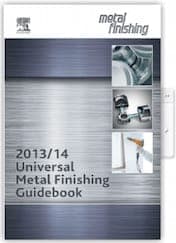
free pdf is currently available from academia.edu
But for practical electroplating, before you apply the nickel plating, you need to get the parts absolutely spotlessly clean; and after they are clean you must remove any oxidation (rust, tarnish) from the surfaces. Any plating which is done on a slightly dirty, oily, or tarnished surface will blister and peel instead of adhering. When you do the plating, it must be completely free of pinholes or porosity because nickel is cathodic to steel and will force the underlying steel to rust and corrode if any remains exposed. Practical electroplating can't be done with kitchen ingredients; all electroplaters buy their process solutions from specialist suppliers.
And plating onto aluminum, brass, copper, stainless steel, etc., involves a different treatment sequence than plating onto steel. I would suggest that you thumb through the Metal Finishing Guidebook to acquire a general understanding of what industrial electroplating involves. Best of luck.
Regards,

Ted Mooney, P.E. RET
Striving to live Aloha
finishing.com - Pine Beach, New Jersey
April 2018
Need long lasting coating for the bolts
January 21, 2019Q. I tried to electroplate with copper. First, it turned out great. Exactly what I wanted, but after a few weeks laying on the work table, bolts started to cover with what looks like rust. The dryer is in the garage and the air often moist, yet I didn't expect them to turn THAT quick. They will go back to the V12 engine to be exposed to heat and humidity. I don't want them to be rusty in a few months after the engine is complete. Please advise.
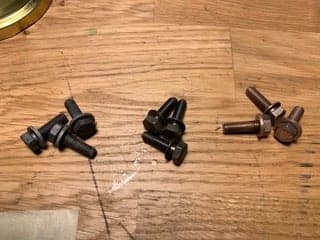
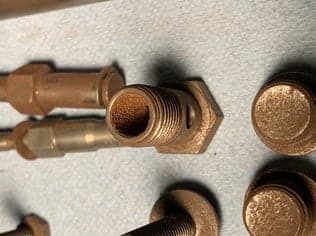
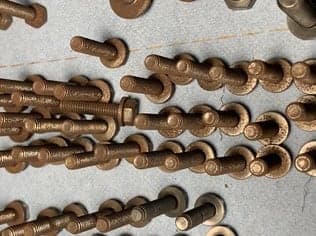
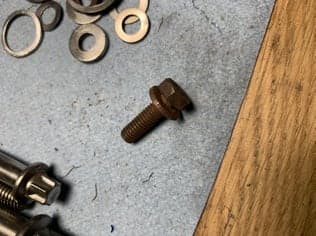
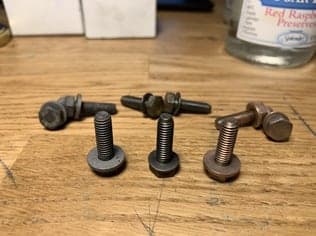
restorer - Redwood City, California US
A. Hi Nick. Your copper plating has been found inadequate for the application, but the bigger question is whether the problem is with copper plating in general or with your attempt at it.
Were the bolts originally copper plated to your knowledge? I imagine they would tarnish like an old penny, but with very heavy and adequate plating I think they could prove okay. You haven't given us any data about your plating but I think the assumption that a hobbyist (if that's what you are) can produce thick, adherent, robust copper plating on their first try might be where the problem lies. Good luck, and tell us more.
Regards,

Ted Mooney, P.E. RET
Striving to live Aloha
finishing.com - Pine Beach, New Jersey
January 2019
A. Can you please tell us more about the process you have done to plate the bolts? Are they steel bolts? What kind of copper plating bath did you use?
From the looks of the bolts I would say that you use a regular CuSO4 copper sulphate
⇦ this on
eBay or
Amazon [affil links] plating bath, the volts were coated with a thin galvanic displacement coating and looke really good, but the coating is thin and will not protect steel from rusting.
- Managua, Nicaragua
February 23, 2019
Q, A, or Comment on THIS thread -or- Start a NEW Thread
